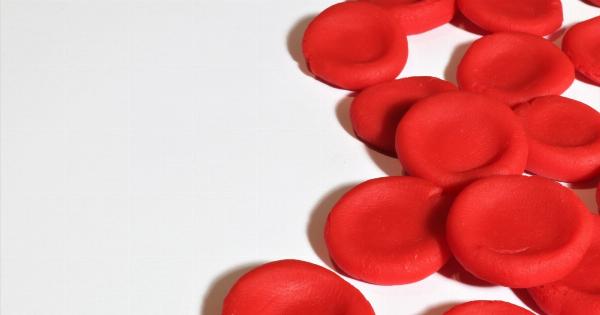Sickle Cell Disease (SCD) is a genetic blood disorder that affects millions of people worldwide. It occurs when the red blood cells become stiff and sticky, forming the characteristic crescent or sickle shape.
This shape restricts blood flow and can cause a wide range of health complications, including chronic pain, organ damage, and stroke.
SCD is a chronic condition that requires lifelong management. Although there is currently no cure for SCD, advances in medical care have improved the quality of life for those living with the disease.
Understanding Sickle Cell Disease
SCD is caused by a mutation in the HBB gene, which provides instructions for making a protein called beta-globin. This protein is a component of hemoglobin, which is responsible for carrying oxygen throughout the body.
In SCD, the abnormal beta-globin causes the red blood cells to form the characteristic sickle shape. These cells are fragile and prone to breaking apart, leading to anemia and a range of other health complications.
SCD is more common in people of African descent, but it can also affect people from other ethnic backgrounds, including Hispanic, Middle Eastern, and Mediterranean.
Symptoms of Sickle Cell Disease
The symptoms of SCD can vary depending on the severity of the disease. Some people may experience frequent pain episodes, while others may have few or no symptoms. Some of the most common symptoms of SCD include:.
- Chronic pain, particularly in the bones, chest, and abdomen
- Delayed growth and development in children
- Frequent infections
- Leg ulcers
- Fatigue
- Yellowing of the skin and eyes (jaundice)
It is important to note that the symptoms of SCD can vary greatly from person to person. Some people may experience only mild symptoms, while others may experience severe complications that require hospitalization.
Diagnosis of Sickle Cell Disease
SCD is usually diagnosed through a blood test that measures the type of hemoglobin in a person’s blood. People with SCD have a higher concentration of abnormal hemoglobin, which is known as hemoglobin S.
In some cases, genetic testing may also be done to confirm a diagnosis of SCD. This can be particularly helpful for people who have a family history of the disease or who are carriers of the gene.
Treatment of Sickle Cell Disease
There is currently no cure for SCD, but there are many treatments available to help manage the symptoms and complications of the disease. Treatment options may include:.
- Pain management: Pain is one of the most common symptoms of SCD, and pain management is a key part of treatment. This may involve over-the-counter pain relievers, prescription pain medications, or other therapies.
- Blood transfusions: In some cases, people with SCD may need blood transfusions to help manage their symptoms. This may involve regular transfusions or transfusions during a pain crisis.
- Hydroxyurea: This medication can help reduce the frequency and severity of pain episodes in people with SCD. It may also help reduce the risk of complications such as stroke.
- Bone marrow transplant: This is a potentially curative treatment for SCD, although it is not recommended for everyone. It involves replacing the bone marrow cells that produce abnormal hemoglobin with healthy cells from a donor.
It is important for people with SCD to work closely with their healthcare team to develop a treatment plan that best meets their needs.
A Day for Sickle Cell Disease
June 19 is recognized as World Sickle Cell Day, a day dedicated to raising awareness about SCD and the challenges that people living with the disease face.
World Sickle Cell Day was established by the United Nations General Assembly in 2008, with the goal of increasing public knowledge and understanding of SCD and promoting access to appropriate care and treatment.
Each year, organizations and individuals around the world host events and activities to raise awareness of SCD and support people living with the disease. These events can include blood drives, informational workshops, fundraising walks, and more.
Getting Involved in World Sickle Cell Day
If you are interested in getting involved in World Sickle Cell Day, there are many ways you can help:.
- Donate blood: Blood transfusions are a common treatment for people with SCD. Donating blood can help ensure that there is an adequate supply of blood for those who need it.
- Spread awareness: Share information about SCD on social media, with friends and family, or by organizing an informational event in your community.
- Support research: Many organizations are working to find new treatments and potential cures for SCD. Consider donating to one of these organizations to help support their efforts.
- Volunteer: Many organizations that support people with SCD are always in need of volunteers. Consider volunteering your time to support people living with the disease.
By getting involved in World Sickle Cell Day, you can help raise awareness of SCD and support people who are living with this challenging condition.
Conclusion
Sickle Cell Disease is a challenging and complex condition that affects millions of people around the world. Although there is currently no cure for SCD, advances in treatment have helped improve the quality of life for those living with the disease.
World Sickle Cell Day provides an opportunity to raise awareness of SCD and support people who are living with this condition.
By getting involved in World Sickle Cell Day, you can help make a difference in the lives of people who are affected by this disease.






























